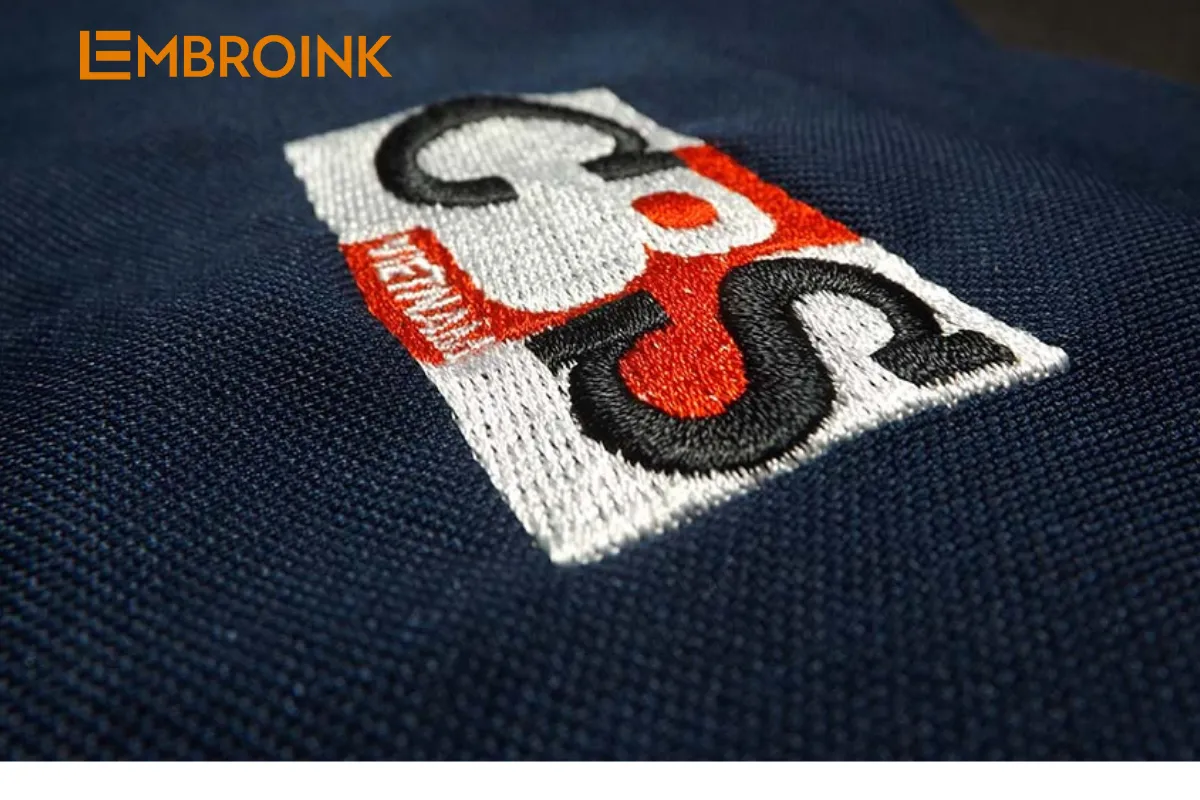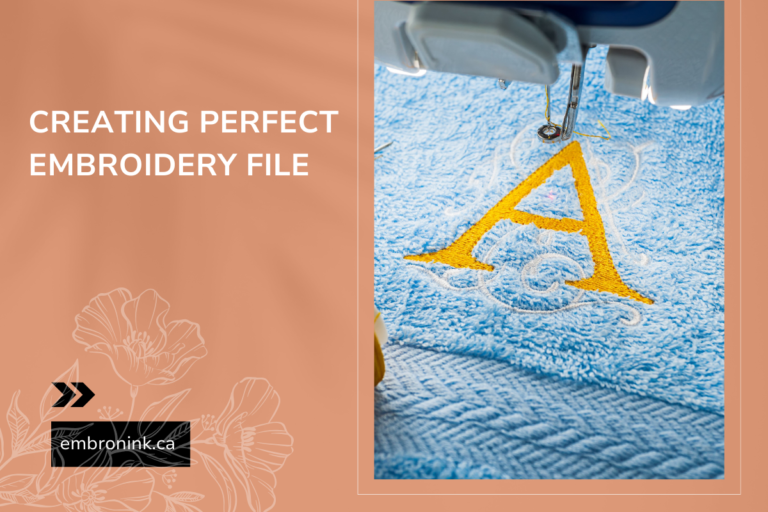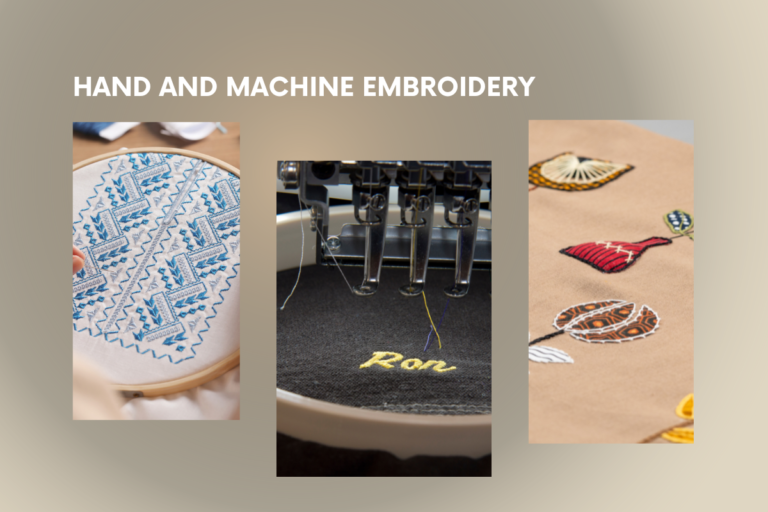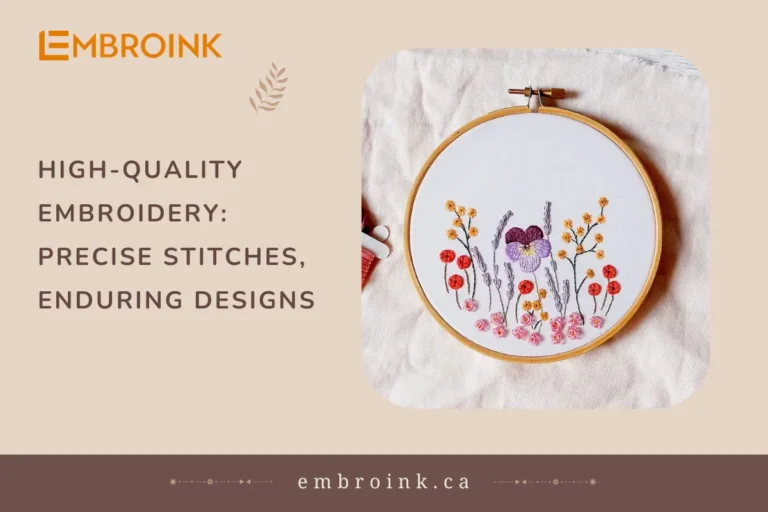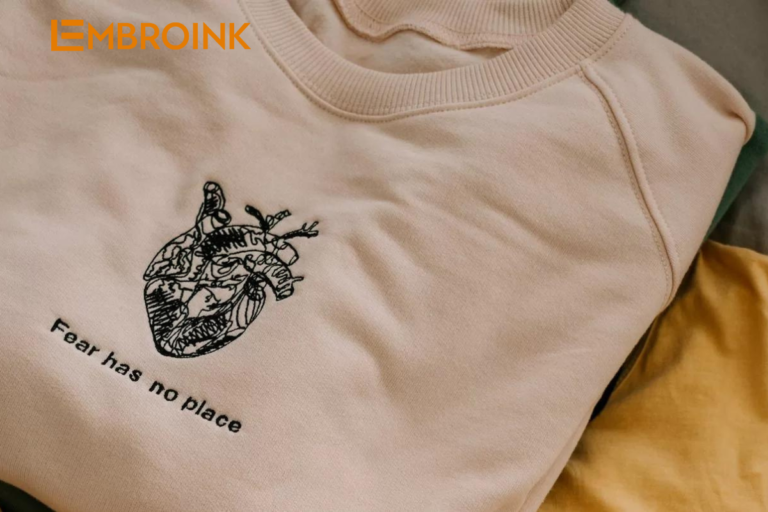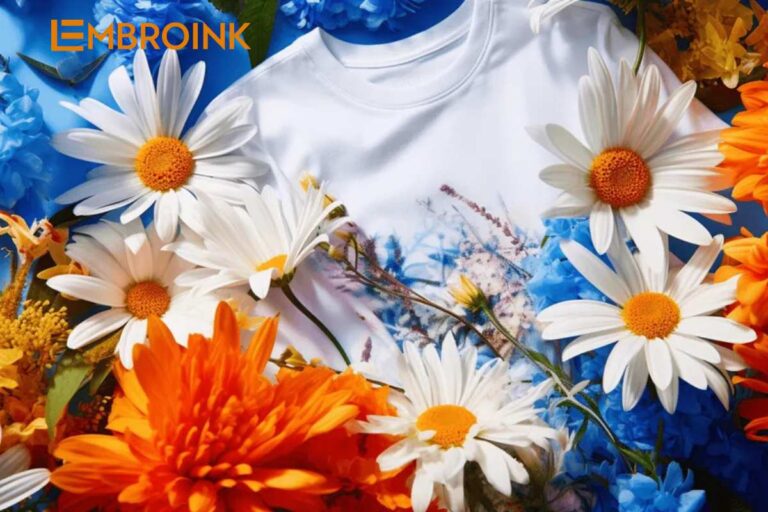Choose your style: Custom embroidered vs. Printed Clothing
Custom embroidered clothing is all about enhancing your business, showcasing your style, and crafting unforgettable looks. But before you jump in, you need to create your design and choose a fulfillment method. The big decision lies between embroidered and printed custom clothing. Both customization methods come with their own set of pros and cons. Understanding these details will help you make the perfect choice that aligns with your brand and designs seamlessly.
So, let’s dive deep and explore with EmbroInk what each method has to offer for your unique needs. Get ready to find your ultimate match for custom t-shirts, hoodies, and more!
Custom embroidered clothing
Embroidery involves stitching intricate designs onto fabric, giving your apparel a textured, artistic, and long-lasting look. Think sophistication and durability combined! From logos to custom designs, the professional finish of custom embroidered is always impressive.
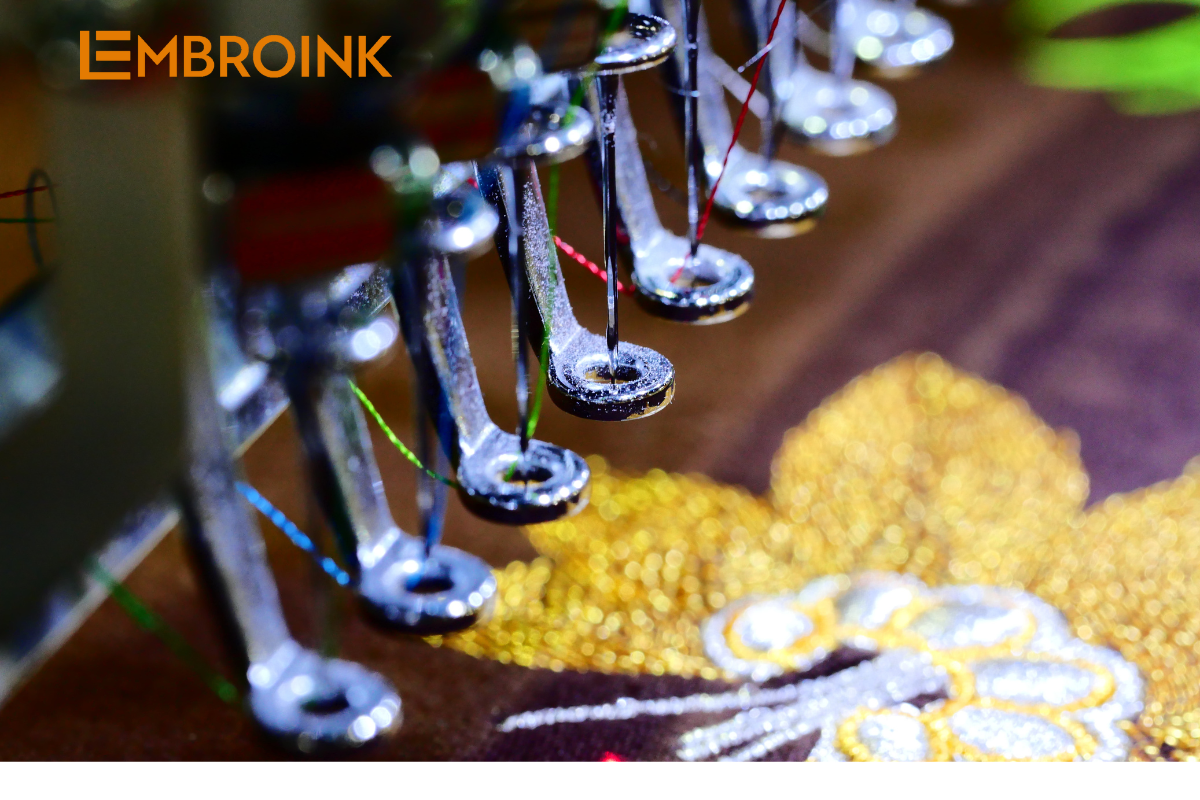
Types of embroidery
There are various embroidery styles to suit your design needs. Here are the two main types:
- Regular embroidery: This classic approach uses a set number of thread colors. It’s ideal for clean and elegant looks, such as logo designs and monograms on t-shirts. While it may have limitations in terms of colors, regular embroidery highlights a refined, sophisticated appearance.
- Unlimited color embroidery: As the name suggests, this technique breaks free from the constraints of limited thread hues. It’s perfect for complex graphics and photorealistic artwork.
Beyond these styles, there are other unique embroidery options to explore. For instance, if you’re keen on adding extra flair to your fabric, 3D Puff embroidery stands out. Here’s a quick list of other embroidery types to consider:
- 3D puff embroidery: Adds a raised, three-dimensional effect to your design.
- Applique embroidery: Involves stitching fabric pieces onto the garment for a layered look.
- Chenille embroidery: Uses a fluffy, yarn-like thread for a textured finish.
- Laser-Cut embroidery: Combines laser-cut fabric pieces with traditional embroidery for precise designs.
Each type of embroidery offers unique advantages, so choose the one that best matches your vision and design needs.
How does embroidery work?
Here’s a brief rundown of the embroidery process:
- Digitizing design: First, your design is converted into a digital file using specialized software. This step, called digitizing, creates instructions for the embroidery machine to follow.
- Hooping the fabric: The fabric is then securely placed in a hoop or frame, making it ready to be embroidered.
- Embroidery machine setup: The digitized design is loaded into the embroidery machine, which has multiple needles and threads prepared for the task.
- Stitching the embroidered design: The process is executed by a computerized embroidery machine. It moves the needles and threads precisely to create the desired patterns, shapes, and colors based on the digitized file.
- Finishing touches: Once the embroidery is complete, any loose threads are trimmed. The embroidered garments are then inspected for quality and accuracy, ensuring a professional finish.
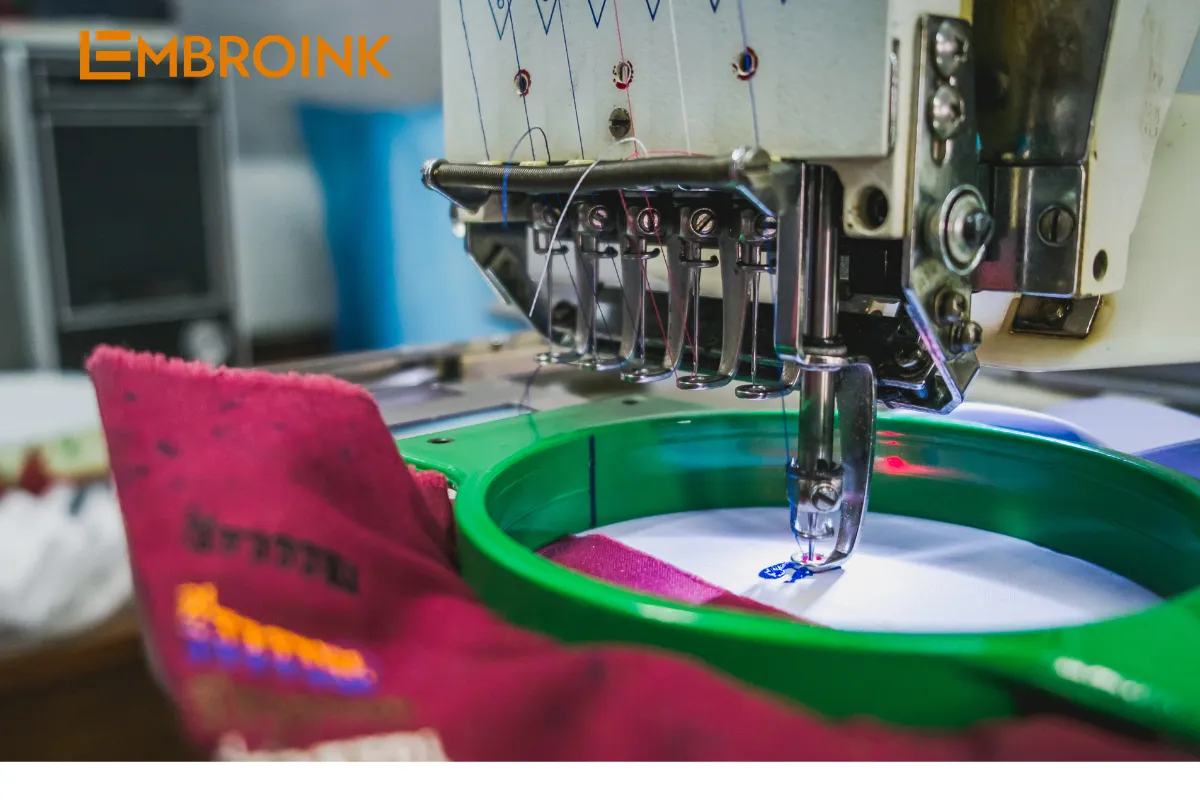
Printed custom clothing
Printing offers incredible versatility, allowing you to use various fabric types and granting you a wide range of creative freedom. Let’s discuss the different printing techniques and the final results each option provides.
Types of printing
Here are the primary printing methods available:
- DTG (Direct-to-Garment) Printing: This method involves directly printing the design onto the fabric using specialized inkjet printers. Due to its detailed finish, DTG is perfect for intricate and colorful designs. The main advantages of DTG include no setup time, quick printing, and low production costs.
- Sublimation printing: Sublimation works by transferring the design onto the fabric using heat and special inks. This technique works best on polyester fabrics and allows for vibrant, all-over prints.
- DTF (Direct-to-Film) printing: Instead of printing directly onto garments, DTF prints the design onto a special film. The design is then transferred onto the fabric using heat and pressure. This versatile option works with various fabric types and produces high-quality, durable prints.
How does printing work?
For those who aren’t tech-savvy, garment printing might seem like magic, but it’s all about the technology. Here’s a simplified breakdown:
- DTG printing: Ink is directly sprayed onto the fabric using an inkjet printer, allowing for detailed and vibrant designs.
- Sublimation printing: The design is printed on a transfer paper with sublimation ink. Heat turns the ink into gas, which then adheres to the fabric fibers, creating a permanent bond.
- DTF printing: The design is printed onto a special film. Heat and pressure are then used to transfer the design from the film to the fabric, ensuring a high-quality finish.
Each printing method offers unique advantages, so choose the one that best suits your design and fabric needs.
Custom embroidered vs. Printed Products: Key differences
When it comes to custom apparel, custom embroidered and printing are the main players. Each technique offers its own advantages and unique charms. Let’s delve into the key differences and explore how they impact the final products.
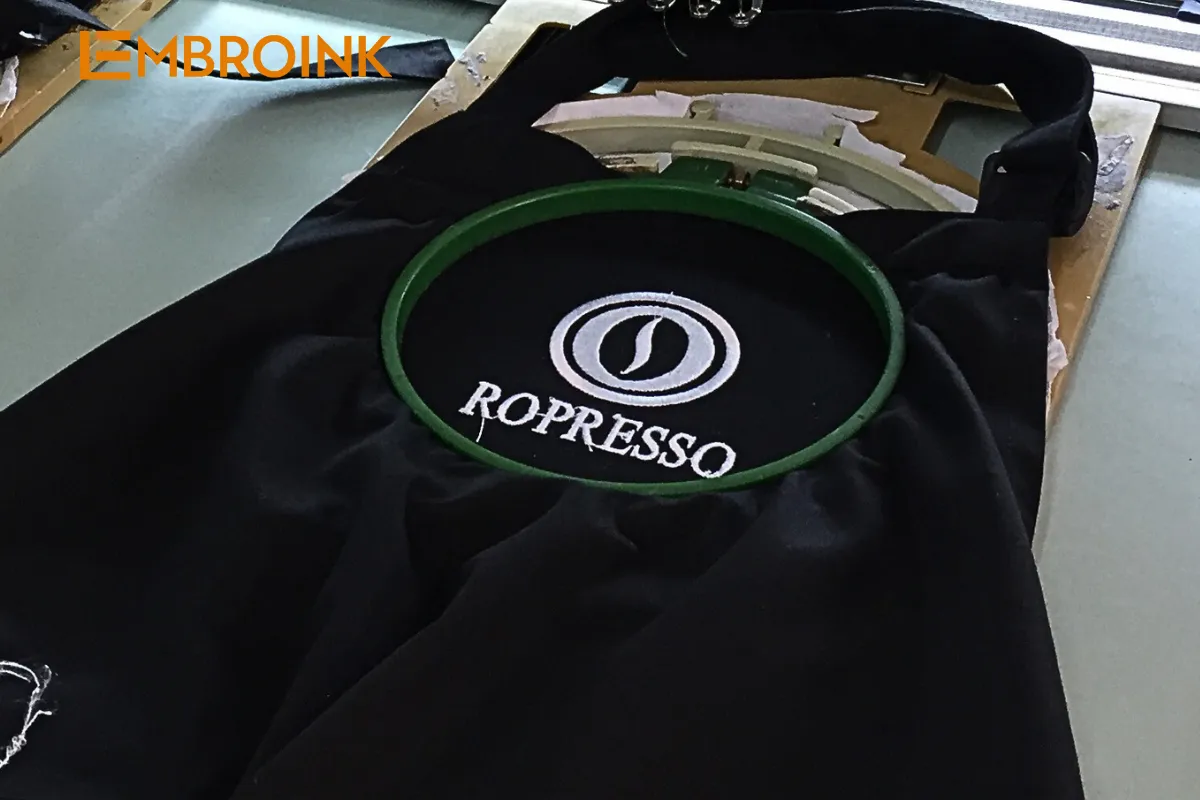
Look and feel
Custom embroidered products not only look stunning but also feel premium. The raised, detailed, and textured 3D design adds depth and dimension to the fabric, creating a distinct tactile experience that sets it apart from other fulfillment methods.
- DTG (Direct-to-Garment): This technology brings vibrant and detailed designs that blend with the fabric. The water-based inks make the prints soft to the touch, although fresh prints may feel slightly rough. Don’t worry, they’ll smooth out after a few washes.
- Sublimation: This technique creates smooth and integrated designs that remain durable and fade-resistant over time. However, sublimation works best on polyester fabrics.
- DTF (Direct-to-Film): This method ensures bold and sharp designs with a slightly raised texture. It works well with many different fabric types, so you can choose your favorite fit.
Durability
Custom embroidered designs are tough and won’t lose their shape or shade even after many washes. However, be cautious of anything that could snag the delicate threads.
- DTG: With proper care, DTG prints stay vibrant, but dark or colorful clothes might show some fading due to fabric ink absorption.
- Sublimation: This method makes designs part of the fabric, so they’re super durable. Remember, 100% polyester shirts last longer than cotton ones, and sublimation dyes are more prone to fade in the sun.
- DTF: These prints are sharp and strong but may crack if washed in very hot water. However, they are more resistant to peeling and cracking than DTG prints.
To keep your custom clothes durable, follow care instructions and avoid harsh chemicals. Both embroidery and printing will stand the test of time if you treat them right.
Design complexity
Embroidery excels in creating intricate and detailed designs with its precise needlework, bringing out fine details, delicate patterns, and monograms with remarkable clarity.
The complexity of printed designs varies with the technique used. While DTG and sublimation are capable of handling a wide range of designs, they may not be ideal for extremely intricate patterns. However, these methods can capture digital designs more sharply than embroidery. DTF printing, in particular, excels at handling complex designs, allowing for the printing of photos, full-color artwork, fine art, small text, graphics, and more with ease. The prints are sharp, realistic, and capable of supporting gradients.
When considering design complexity, it’s important to think about the level of detail you need. For highly specific and detailed designs, embroidery is the best choice. For bold and elaborate graphics, printing techniques deliver impressive results.
Design size
Embroidery is ideal for smaller designs, providing precision and detail even in tiny logos or monograms. The controlled stitching ensures top-quality results. However, for large designs, embroidery may not be the best choice due to the extra time, precision, and costs involved.
Printing techniques like DTG, DTF, and sublimation are perfect for larger, bolder designs. These methods excel at producing eye-catching graphics and full-size prints, making them ideal for apparel that stands out. However, be mindful that very small designs might lose sharpness due to resolution limitations in printing.
Colors
Embroidery utilizes various colored threads to create designs. Regular embroidery relies on a fixed number of thread colors, while unlimited color embroidery offers a wider range, allowing for more complex and vibrant designs.
- DTG printing: Uses the CMYK color model (cyan, magenta, yellow, and black), along with white ink for the base. The ink is sprayed directly onto the fabric, which can sometimes result in slightly less vibrant prints.
- Sublimation printing: Works best on white or light-colored garments because the sublimation ink is transparent, allowing the base color to show through, which can affect the vibrancy of the colors.
- DTF printing: Uses primary colors with a white base, ensuring vibrant and vivid prints on any fabric color or type.
Products
When choosing between embroidery and printing, consider the material and surface you’re working with. Embroidery is excellent for items like caps and jackets, where printing might not be suitable. It allows for creativity in design placement on the garment.
- DTG printing: Best suited for hoodies or t-shirts. It struggles with thicker fabrics or uneven surfaces because the ink may not adhere properly.
- Sublimation printing: Ideal for polyester clothing, providing long-lasting and fade-resistant prints. It is less effective on non-polyester materials.
- DTF printing: Extremely versatile, capable of printing on clothing as well as non-fabric items like wood, metal, and ceramics.
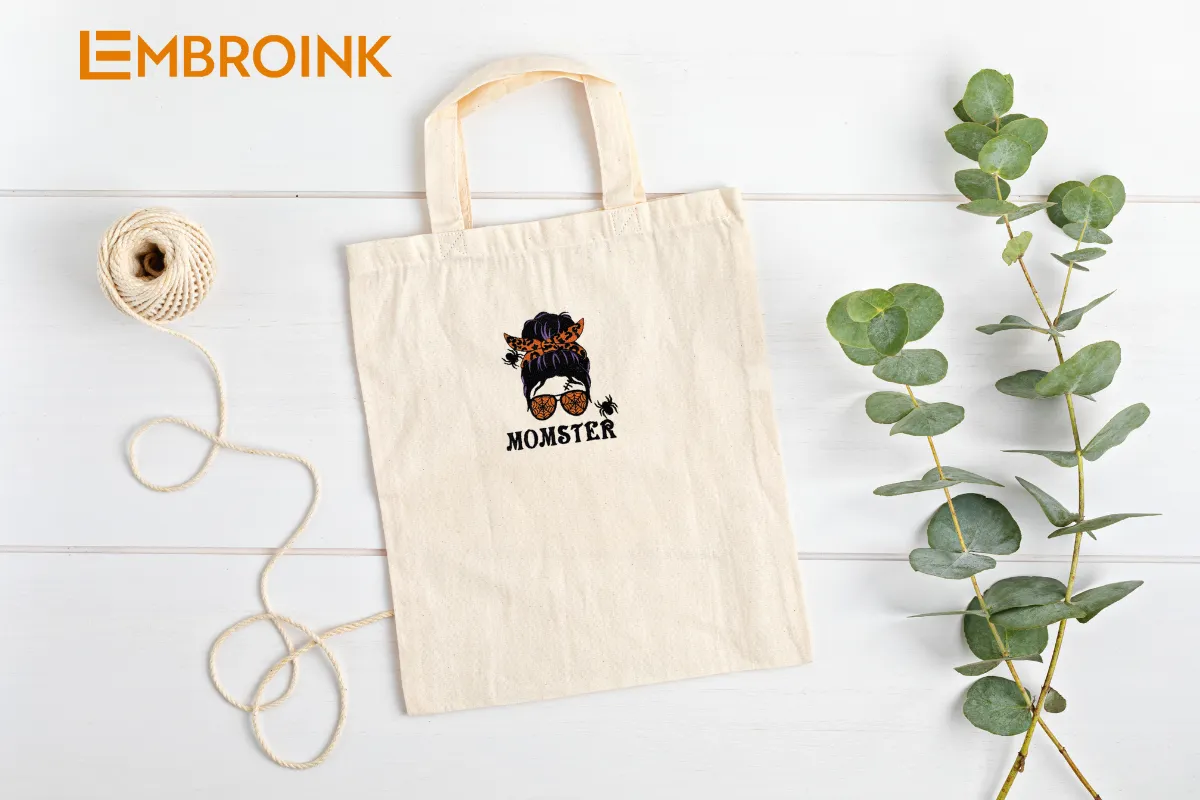
On-Demand fulfillment
With on-demand fulfillment, you have the freedom to create custom clothing whenever you want without worrying about large production runs. This approach allows you to cater to individual orders, reduce waste, and avoid excess inventory. Here’s a closer look at how on-demand fulfillment works.
What is custom embroidered fulfillment?
On-demand fulfillment is an efficient way to manage orders, producing, packing, and shipping products only after an order is placed. This means you don’t have to deal with printing or storing items yourself. Simply design the products, launch your online store, and connect with an on-demand fulfillment provider like Printful. When orders come in, they handle everything—from printing to packing and shipping.
With EmbroInk, there’s no minimum order quantity requirement. This flexibility lets you create personalized designs for a wide range of items and market them under your brand. You can also integrate on-demand solutions with in-house production to reduce risks, increase capacity, and avoid overproduction.
Getting started with printful
- Design product template: Upload or create your design and attach it to a product. This creates a ready-made product that’s set to be added to your store.
- Connect store: If you don’t have an online store, create one. EmbroInk integrates with various eCommerce platforms and marketplaces like Shopify, eBay, and Etsy.
- Add products to store: Choose ready-made product templates and add them to your shop with just one click.
- Set up payment methods: When customers purchase from your store, they pay the retail price on your platform. You then pay printful for fulfillment, shipping, and taxes. These payments are separate.
- Start selling: Once an order is placed, we automatically forwards it to the nearest fulfillment center, where items are produced within 2–5 business days. Shipping time depends on product availability and the delivery destination.
This streamlined process helps you seamlessly start selling custom embroidered products .

